How to reduce costs and provide optimal IT support for the business model. We are looking for the “middle way of salvation”
Achieving a balance between cost savings and optimal business model support remains one of the key challenges for many IT departments. They also need to figure out how to adapt the amount of IT support to the needs of the business model, so as not to complicate the IT infrastructure and not lose control over the number of enterprise applications. This article discusses issues related to a comprehensive analysis and determination of key decision-making parameters, from the point of view of successful transformation of the main applications in accordance with the needs of the business model.
Key applications in the changing enterprise IT landscape
In any large-scale and constantly evolving IT infrastructure, there are many business-critical applications that are developed individually for several years. Their ability to cope with future business challenges must pass a comprehensive strength test. Such specialized core applications can support key processes or manage huge flows of financial data in public and private sector organizations. Any failure on their part can cause enormous financial damage to the company and (or) lead to severe reputation losses.
IT decision makers need to determine the future of these applications: should they be replaced, redeployed, or upgraded? Mistakes or insufficient attention to certain aspects (for example, regarding complexity, expertise, transparency, management) at the decision-making stage leads to unsuccessful projects (“money pits”) or to failure to meet deadlines and exceeding the budget, as well as to the lack of a proper level of business performance or IT
In order to ensure successful implementation of the project and guarantee a reduction in risks and maximum increase in potential benefits, the decision-making process should be based on an extensive analysis of the main applications. In addition to the technological and business functionality of the main application, such an analysis should be based on the knowledge of all interested parties - business units, users, programmers and IT specialists.
Such an approach will facilitate a gradual, transparent and controllable process for transforming applications that meets the current and future requirements of the developing world of digital technology, which does not jeopardize the intrinsic value or functioning of existing applications.
The need for a comprehensive analysis
Is a successful conversion possible if the interdependencies between the systems are not obvious, if the modules and elements are not transparent, and the interfaces are poorly supported and only documented to a minimum extent? Are any transformations possible if you don’t know which modules and components are used and how are they used in the business process? What kind of knowledge and skills will be lost upon retirement? How do you assess the importance of factors such as cost, time and risk?
A comprehensive analysis allows us to solve such problems, thereby creating a reliable information base for decisions that must be taken to transform applications into a promising architecture in a controlled manner.
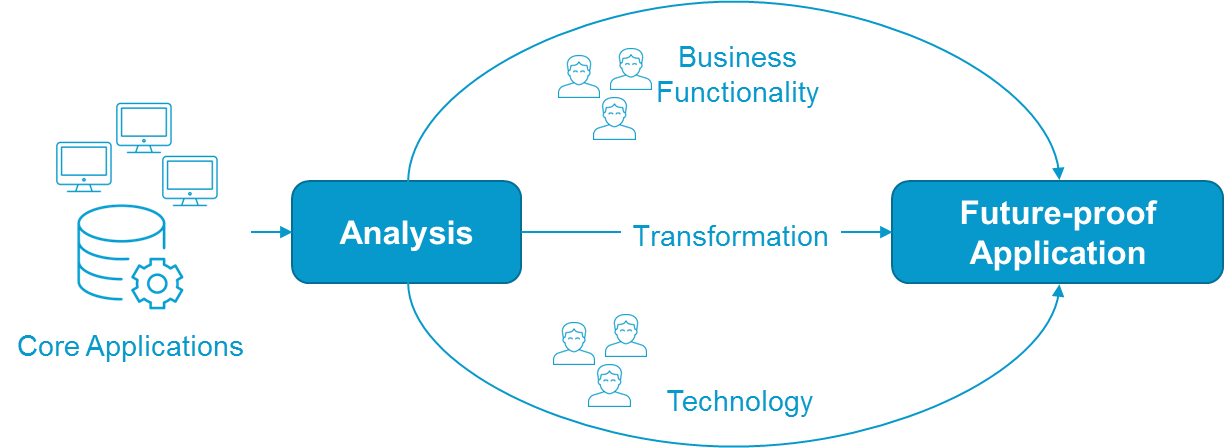
Fig. 1 Analysis and transformation of key applications
It is important that all relevant organizational structures are involved in the application analysis process (for example, business units, research and development). Such an analysis of the main application should be carried out in the context of both business tasks and IT, so that it includes, for example, industry methods, business processes, software products, IT infrastructures and IT architectures.
Only a complete analysis of the specifics of the business and IT will allow you to conduct a thorough assessment of the capabilities of the main application necessary for making decisions based on calculated risks. In addition to this level of detail, transparency of the relationships between system components and systems in development and runtime environments (including programming languages and environments, database systems, middleware, job management tools), as well as IT infrastructures (operating systems, hardware, devices) is required .
It should also take into account both static aspects (application structure, source code, interfaces) and dynamic parameters (application behavior during its operation). All relevant business and IT factors must be documented sequentially and in relation to each other. All interested parties should have access to the results of the analysis in order to view and use them for joint decision making.
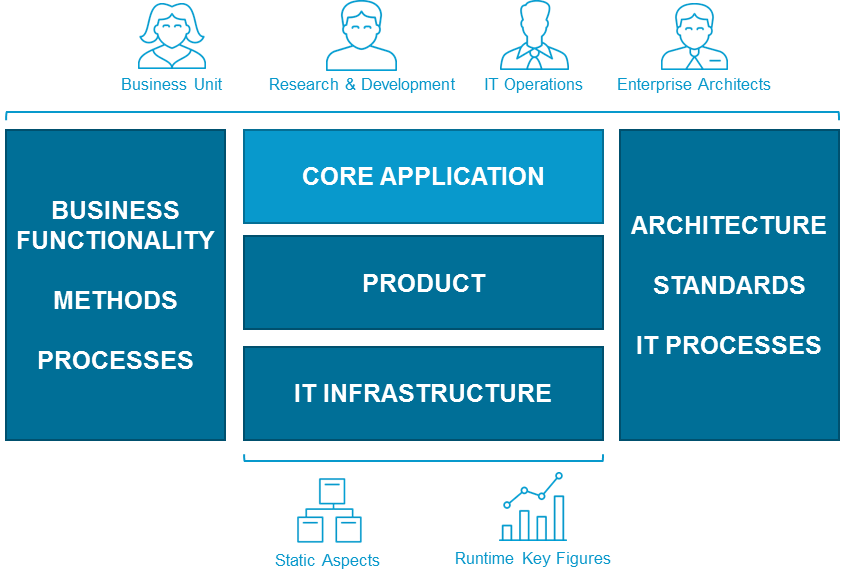
Fig. 2 Key applications
Complexity of core applications
Business-critical applications, regardless of whether they are interactive or batch, are quite complex. This is reflected not only in the source code, but also in the corresponding business logic and database transaction logic. Such applications involve several interfaces that closely connect internal and external IT systems, serving various business processes and user groups.
The main applications run mainly on mainframe or server platforms with a high degree of scalability and use technologies such as Natural, COBOL, Adabas, DB2, or VSAM. Since all of these systems have been optimized over the years, they provide a high level of quality during the operational phase, which translates into support for the strict requirements of Service Level Agreements (SLAs).
Complete process transparency and full knowledge of these related applications may be in jeopardy due to factors such as retirement and subsequent generations. Up-to-date, consistent documentation on the implementation of IT systems and related business functionality is often not available.
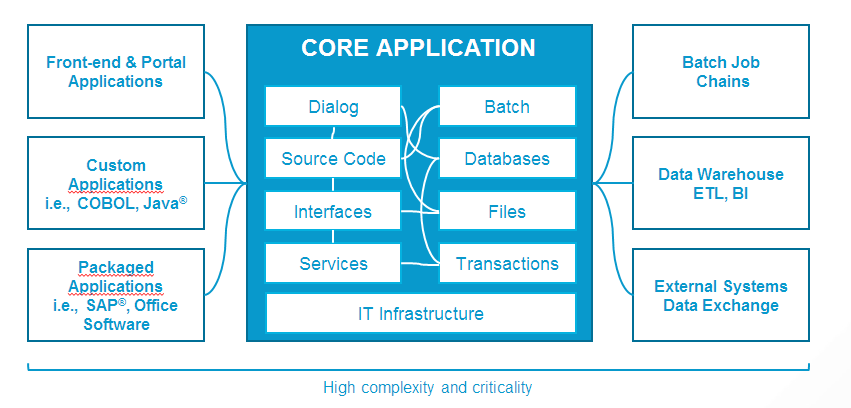
Fig. 3 Complexity of key applications
Integrated analysis platform
In order to document all elements related to the context, establish their interaction and exchange with various stakeholders, a platform for joint analysis is needed. It will help to determine information about the business functionality of the main applications and the main elements of the IT portfolio and corporate architecture.
The platform provides at the disposal of all interested parties a comprehensive, consistent and centralized knowledge base for generating requests and making optimal decisions.
Analysis of the main applications
The analysis of the main application should take into account structural (static) aspects and parameters related to the runtime (dynamic), which will establish the level of complexity and criticality from the point of view of using the application.

Fig. 4 Integrated Analysis Platform
Static analysis of applications
Business logic and process logic are implemented using source code and related software structures and libraries. However, often the source code is a spaghetti code without a clear structure, which negatively affects the recognition and change of business logic. Natural Engineer, a tool for static analysis of applications (such as programs and data structures), allows you to accurately display the current situation. Different evaluation options will help make complex static analysis of applications more manageable.

Fig. 5 Static analysis of applications
An ideal analysis platform, such as Natural Engineer, offers the following features:
- Analysis tools for COBOL, IBM CICS tables, JCL source code, and Natural.
- Support for Adabas & Natural , COBOL, as well as other 3GL languages and features, such as various types of programming, such as routines, notebooks, and different product versions.
- Recognition interface and documentation.
- Automatic creation of application documentation, structural diagrams (for example, control flow, decision tables), reports and impact analysis in several formats (for example, Microsoft Excel, Microsoft Word, PDF and HTML).
- Recognition of databases (e.g. Adabas , DB2), database structures, and access types.
- Metrics of complexity (McCabe, Halstead).
- Detection of obsolete or redundant source code.
- Web-based tools for interactive navigation through software structures and dependencies.
Dynamic process analysis
Dynamic analysis evaluates the application transaction load at runtime, database access, user interaction, and service calls during normal operation and peak load. Thanks to this analysis, you can get information about the number of users of the application over a certain period of time and the efficiency with which it processes peak loads.
The Entire Operations solution allows you to evaluate work in batch processing mode and work with entire networks of batch jobs. The processing statuses of all jobs are checked for detection and reporting of any SLA violations and a better understanding of dependencies.

Fig. 6 Dynamic analysis of dialog and batch applications
An ideal analysis platform, such as Entire Operations, offers the following dynamic analysis capabilities:
- Support for interactive and batch applications.
- Diagnostics of the source code during application execution (profiling and scope of the code).
- Monitoring production status on distributed and heterogeneous platforms.
- Detection of critical situations through regular monitoring of system KPIs.
- Measurement and visualization of completed batch processes and determination of discrepancies in processes (goal versus fact).
- Graphical dashboards for quick and easy pricing.
Business Function Analysis
The main task of analyzing the business functionality of the main application is to establish a relationship between business elements and technical elements in order to determine which parts of the application implement specific business rules and (or) processes. Only through such correlations can one get a complete picture of the progress of the application and actually exchange data between the employees of the business units and the IT department.
The interface between Natural Engineer static analysis tools and business function analysis provides information about applications, programs, and relationships in a way that non-technical employees understand. It serves as the basis for documenting business processes and recommendations for improvements and new opportunities.
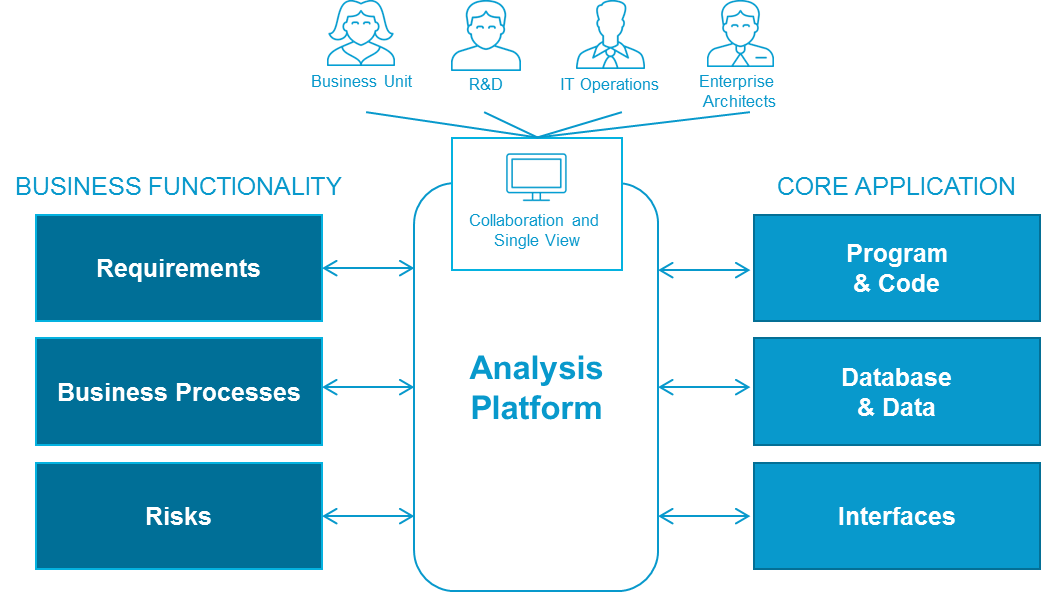
Fig. 7 Analysis of key applications of business functionality
Perfect analysis through the Natural Engineer ARIS interface and the ARIS platform offers the following features:
- Match business processes and rules to implementation components.
- Translation of the program’s technical logic into an additional documentation format (for example, in the form of recording business process modeling.
- (BPMN)), which will be understandable and useful for business units.
- Matching packet data with business events (business logic).
- Analysis of business processes and their implementation in order to optimize.
- Support for collaboration between business and technology departments.
IT Portfolio Analysis
The results of the analysis of the main applications and their business functions will become the basis for conducting an inventory and analysis of the IT portfolio. An analysis of the IT portfolio will allow us to outline and evaluate business functionality, as well as applications, technologies, strategies, requirements, projects and their complex relationships with each other in order to optimize the application environment and ensure compliance with business goals.
To implement the ideal environment, an IT portfolio management platform such as Software AG's Alfabet is used, as well as plans for implementing and monitoring compliance. Moreover, at the stages of collecting information, evaluating the portfolio and making decisions related to the portfolio, it is extremely important to apply an approach based on the use of roles and responsibilities. Those interested in managing their IT portfolio need reliable information about applications and their specifics. They should also have access to content, views, functions, and workflows in accordance with their roles.

Fig. 8 Interaction of business functionality, IT portfolio and key applications
In the analysis process, Alfabet's IT portfolio management platform allows all interested parties to:
- Link business functions, applications, technologies, projects, strategies, requirements and costs.
- Define standards for documenting and evaluating projects (cost / income analysis).
- Use the results of the analysis of applications and business functions to optimize and align the volume of applications with the business strategy.
- Assess the impact of changes in business functions or technologies on the application portfolio and vice versa.
- Create and monitor compliance with the development plan in terms of the application landscape.
- Integrate existing IT repositories and their assets.
- Customize reporting and analytics features.
- Define and configure access levels and workflows for the respective roles.
Strategic IT Transformation Planning and Modeling
The results of the analysis of applications, business functions and the entire IT portfolio serve as a starting point for decisions that will facilitate the development of a robust development plan that transforms your existing core application architecture into a future-oriented, targeted architecture. Effective analysis allows relevant departments to continuously monitor and manage the transformation process as needed. The possibility of parallel functioning of current and target applications during the implementation period means that the changed or added architectural elements can be evaluated at an early stage, which will significantly reduce risks and reduce implementation time.
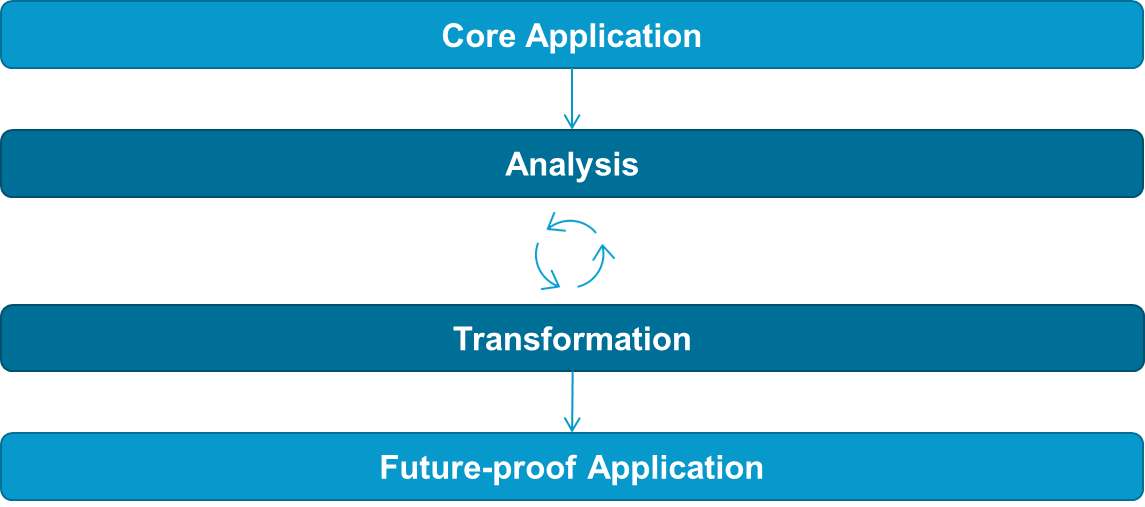
Fig. 9 The path of transformation of key processes
Your way to success
Successful transformation requires comprehensive, relevant data from the analysis. The analysis should consist of three approaches:
- Key application analysis includes static and dynamic processing methods for online and batch applications
- Analysis of business functionality using the results of the analysis described in paragraph 1.
- Analysis of IT portfolio based on the results of the analyzes described in paragraphs 1 and 2
If necessary, it is possible to provide additional studies that can be carried out in parallel with the described approach, which will allow you to achieve your goals even faster.
Are you ready to take the first step?
Let's discuss how to transform the key applications of your business. Write to us
All Articles